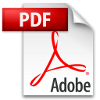General Info
| Host: | Goat |
| Applications: | Pep-ELISA/WB/IHC/IF/ChIP |
| Reactivity: | Human/Mouse/Rat/Dog/Pig/Cow |
| Note: | STRICTLY FOR FURTHER SCIENTIFIC RESEARCH USE ONLY (RUO). MUST NOT TO BE USED IN DIAGNOSTIC OR THERAPEUTIC APPLICATIONS. |
| Short Description: | Goat polyclonal antibody anti-Androgen Receptor (N-Term) is suitable for use in ELISA, Western Blot, Immunohistochemistry, Immunofluorescence and ChImmunoprecipitation research applications. |
| Clonality: | Polyclonal |
| Conjugation: | Unconjugated |
| Isotype: | IgG |
| Formulation: | 0.5 mg/ml in Tris saline, 0.02% sodium azide, pH7.3 with 0.5% bovine serum albumin. NA |
| Purification: | Purified from goat serum by ammonium sulphate precipitation followed by antigen affinity chromatography using the immunizing peptide. |
| Concentration: | 0.5 mg/mL |
| Dilution Range: | WB-Recommended concentration:0.1-0.5µg/mlIHC-2-3µg/mlIF-Strong expression of the protein seen in the mitochondria/cytoplasm of MCF7 and U2OS cells. 10µg/mlELISA-antibody detection limit dilution 1:64000. |
| Storage Instruction: | Store at-20°C on receipt and minimise freeze-thaw cycles. |
Information
| Gene Symbol: | AR |
| Gene ID: | 367 |
| Uniprot ID: | ANDR_HUMAN |
| Immunogen Region: | N-Term |
| Accession Number: | NP_000035.2 |
| Specificity: | This antibody is expected to recognize isoform 1 (NP_000035.2) only. |
| Immunogen Sequence: | EVQLGLGRVYPRPPSC |
Description
| Post Translational Modifications | Sumoylated on Lys-388 (major) and Lys-521. Ubiquitinated. Deubiquitinated by USP26. 'Lys-6' and 'Lys-27'-linked polyubiquitination by RNF6 modulates AR transcriptional activity and specificity. Phosphorylated in prostate cancer cells in response to several growth factors including EGF. Phosphorylation is induced by c-Src kinase (CSK). Tyr-535 is one of the major phosphorylation sites and an increase in phosphorylation and Src kinase activity is associated with prostate cancer progression. Phosphorylation by TNK2 enhances the DNA-binding and transcriptional activity and may be responsible for androgen-independent progression of prostate cancer. Phosphorylation at Ser-83 by CDK9 regulates AR promoter selectivity and cell growth. Phosphorylation by PAK6 leads to AR-mediated transcription inhibition. Palmitoylated by ZDHHC7 and ZDHHC21. Palmitoylation is required for plasma membrane targeting and for rapid intracellular signaling via ERK and AKT kinases and cAMP generation. |
| Function | Steroid hormone receptors are ligand-activated transcription factors that regulate eukaryotic gene expression and affect cellular proliferation and differentiation in target tissues. Transcription factor activity is modulated by bound coactivator and corepressor proteins like ZBTB7A that recruits NCOR1 and NCOR2 to the androgen response elements/ARE on target genes, negatively regulating androgen receptor signaling and androgen-induced cell proliferation. Transcription activation is also down-regulated by NR0B2. Activated, but not phosphorylated, by HIPK3 and ZIPK/DAPK3. Isoform 3: Lacks the C-terminal ligand-binding domain and may therefore constitutively activate the transcription of a specific set of genes independently of steroid hormones. Isoform 4: Lacks the C-terminal ligand-binding domain and may therefore constitutively activate the transcription of a specific set of genes independently of steroid hormones. |
| Protein Name | Androgen ReceptorDihydrotestosterone ReceptorNuclear Receptor Subfamily 3 Group C Member 4 |
| Database Links | Reactome: R-HSA-3371497Reactome: R-HSA-383280Reactome: R-HSA-4090294Reactome: R-HSA-5625886Reactome: R-HSA-5689880Reactome: R-HSA-8940973 |
| Cellular Localisation | NucleusCytoplasmDetected At The Promoter Of Target GenesPredominantly Cytoplasmic In Unligated Form But Translocates To The Nucleus Upon Ligand-BindingCan Also Translocate To The Nucleus In Unligated Form In The Presence Of Rack1 |
| Alternative Antibody Names | Anti-Androgen Receptor antibodyAnti-Dihydrotestosterone Receptor antibodyAnti-Nuclear Receptor Subfamily 3 Group C Member 4 antibodyAnti-AR antibodyAnti-DHTR antibodyAnti-NR3C4 antibody |
Information sourced from Uniprot.org
12 months for antibodies. 6 months for ELISA Kits. Please see website T&Cs for further guidance




